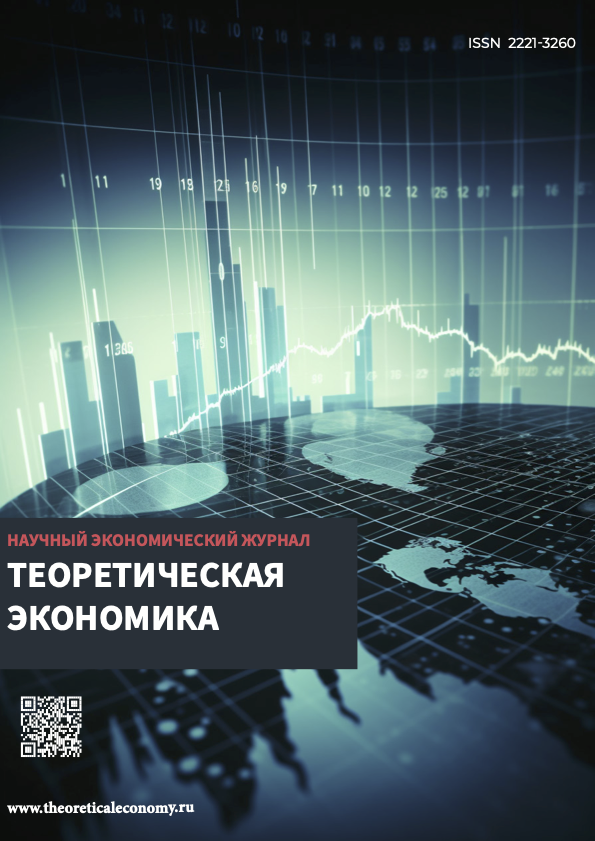Yaroslavl, Yaroslavl, Russian Federation
Today, there are almost 5,700 special economic zones in the world, of which more than 1,000 have been established in the last 10 years. The rapid growth of special economic zones was part of a new wave of industrial policy and a response to the growing competition for affordable international investment. The economic and political objectives of the zones vary from country to country. In some countries, the role of zones is to provide tariff concessions and reduce the administrative burden of customs procedures to support complex cross-border supply chains. In other countries, the main objective of zonal policy is to diversify and modernize industries by attracting foreign direct investment. The specialization of particular zones depends on their historical context. The article marks out the main stages of evolution of special economic zones, presents their characteristics, and also identifies structural and typological features of zones at each stage. The first stage relates to the development of trade zones, which have had the advantage of reducing customs barriers to export and import activities. The second stage relates to the development of industrial zones that have stimulated the creation of new productions within their borders. In the third stage there were developed technology zones with preferential treatment focused on high technology creation and commercialization. The fourth stage is characterized by the development of cross-border zones, the nature of which was at the intersection of two concepts: the zonal and the regional economic integration.
special economic zone; typological evolution; trade zone; industrial production zone; service zone; high-technology zone; integrated zone; cross-border zone
1. Meng, G. The Theory and Practice of Free Economic Zones: A Case Study of Tianjin, People’s Republic of China / G. Meng. – Ruprecht-Karls University of Heidelberg, 2003. – Tekst : elektronnyy. – URL: https://archiv.ub.uni-heidelberg.de/volltextserver/3244/1/fez-meng.pdf (data obrascheniya: 15.03.2023).
2. Farole, T. Special Economic Zones: Progress, Emerging Challenges, and Future Directions / T. Farole, G. Akinci. – Washington, DC: World Bank, 2011. – Tekst : elektronnyy. – URL: https://openknowledge.worldbank.org/handle/10986/2341 (data obrascheniya: 09.04.2023).
3. Karachev, I. A. Teoreticheskie voprosy analiza special'nyh ekonomicheskih zon v kontekste vzaimodeystviya gosudarstva i biznesa / E. V. Sapir, I. A. Karachev // Teoreticheskaya ekonomika. – 2020. – № 6 (66). – S. 64–74. – ISSN 2221-3260.
4. Akinci, G. Special Economic Zone: Performance, Lessons Learned, and Implication for Zone Development / G. Akinci, J. Crittle. – Foreign Investment Advisory Service (FIAS) occasional paper Washington, DC: World Bank, 2008. – Tekst : elektronnyy. – URL: http://documents.worldbank.org/curated/en/343901468330977533/Special-economic-zone-performance-lessons-learned-and-implication-for-zone-development (data obrascheniya: 21.04.2023).
5. Leveraging a New Generation of Industrial Parks and Zones for Inclusive and Sustainable Development: Strategic Framework // United Nations Industrial Development Organization (UNIDO), 2018. – Tekst : elektronnyy. – URL: https://www.unido.org/sites/default/files/files/2019-12/UNIDO_Strategic%20Framework_WEB.pdf (data obrascheniya: 20.05.2023).
6. Cheng, T. From Special Economic Zones to Greater Special Economic Region – Hong Kong Special Administrative Region as a Model for Legal Infrastructure Design / T. Cheng // Transnational Corporations. – 2019. – Vol. 26. – № 3. – P. 63–87. – Tekst : elektronnyy. – URL: https://doi.org/10.18356/759ea4c6-en (data obrascheniya: 13.05.2023).
7. Enhancing the Contribution of Export Processing Zones to the Sustainable Development Goals // United Nations Conference on Trade and Development (UNCTAD), 2015. – Tekst : elektronnyy. – URL: https://unctad.org/system/files/official-document/webdiaepcb2015d5_en.pdf (data obrascheniya: 05.02.2023).
8. Export Processing Zones // World Bank, 1992. – Tekst : elektronnyy. – URL: https://documents1.worldbank.org/curated/en/400411468766543358/pdf/multi-page.pdf (data obrascheniya: 11.04.2023).
9. Karachev, I. A. Mirovoy opyt sozdaniya i funkcionirovaniya special'nyh ekonomicheskih zon / E. V. Sapir, I. A. Karachev // Vestnik Samarskogo gosudarstvennogo ekonomicheskogo universiteta. – 2020. – № 4 (186). – S. 38–46. – ISSN 1993-0453
10. Experiences and Best Practices of Industrial Park Development in the People’s Republic of China // United Nations Industrial Development Organization (UNIDO), 2020. – Tekst : elektronnyy. – URL: https://www.unido.org/sites/default/files/files/2020-11/EN_Experiences_and_Best_Practices _of_Industrial_Park_Development_in_China.pdf (data obrascheniya: 14.04.2023)
11. Lord, M. J. Special Border Economic Zone (SBEZ) in the Indonesia-Malaysia-Thailand Growth Triangle (IMT-GT) / M. J. Lord, P. Tangtrongjita // Asian Development Bank (ADB), 2014. – Tekst : elektronnyy. – URL: https://www.adb.org/sites/default/files/related/41573/scoping-study-sbez-imt-gt.pdf (data obrascheniya: 11.05.2023).
12. Aggarwal, A. Special Economic Zones in the Indonesia–Malaysia–Thailand Growth Triangle Opportunities for Collaboration / A. Aggarwal // Asian Development Bank (ADB), 2022. – Tekst : elektronnyy. – URL: https://www.adb.org/sites/default/files/publication/772536/special-economic-zones-imt-growth-triangle.pdf (data obrascheniya: 11.04.2023).
13. Dube, C. Special Economic Zones in Southern Africa: Is Success Influenced by Design Attributes? / C. Dube, W. Matsika, G. Chiwunze // United Nations University World Institute for Development Economics Research (UNU-WIDER), 2020. – Tekst : elektronnyy. – URL: https://www.wider.unu.edu/sites/default/files/Publications/Working-paper/PDF/wp2020-61.pdf (data obrascheniya: 04.05.2023).
14. Farole, T. Special Economic Zones in Africa: Comparing Performance and Learning from Global Experience / T. Farole. – Washington, DC: World Bank, 2011. – Tekst : elektronnyy. – URL: https://openknowledge.worldbank.org/handle/10986/2268 (data obrascheniya: 09.04.2023).
15. Handbook on Policies, Promotion, and the Facilitation of Foreign Direct Investment for Sustainable Development in Asia and the Pacific // United Nations Economic and Social Commission for Asia and the Pacific (ESCAP), 2022. – Tekst : elektronnyy. – URL: https://www.unescap.org/sites/default/d8files/knowledge-products/FDI%20Handbook%202022 %3D2.pdf (data obrascheniya: 11.05.2023).
16. Bräutigam, D. «Going Global in Groups»: Structural Transformation and China’s Special Economic Zones Overseas / D. Bräutigam, X. Tang // World Development. – 2014. – № 63. – P. 78–91. – Tekst : elektronnyy. – URL: https://doi.org/10.1016/j.worlddev.2013.10.010 (data obrascheniya: 19.04.2023).
 This work is licensed under Creative Commons Attribution-NonCommercial-NoDerivatives 4.0 International
This work is licensed under Creative Commons Attribution-NonCommercial-NoDerivatives 4.0 International












